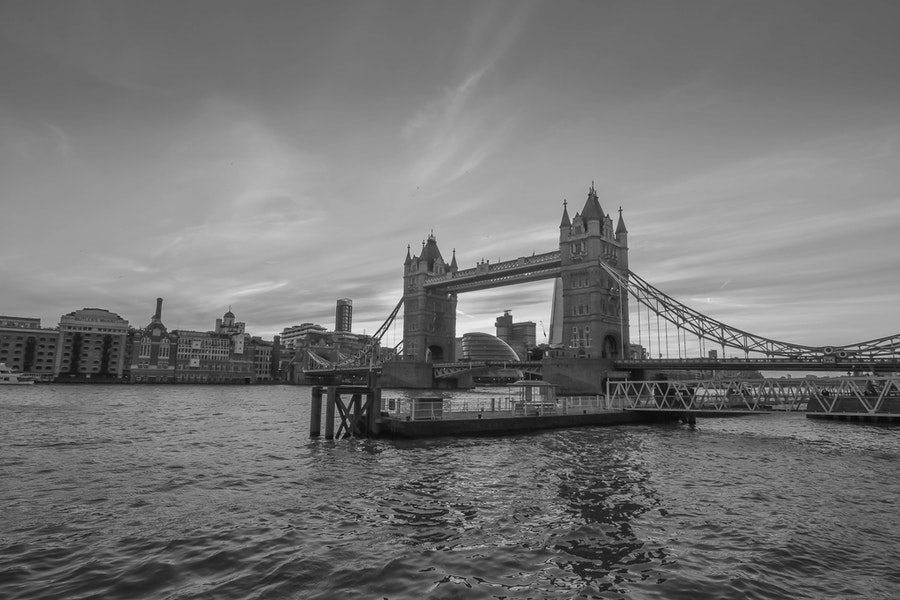Originally published January 2021.
In 1929, when an American congressman compared England’s longest river unfavourably with the Mississippi, the MP for Battersea, John Burns, quipped: “The Mississippi is muddy water, but the Thames is liquid history.” Burns was not one for hyperbole. The Thames, which flows from the Cotswolds in the west to the North Sea in the east, has witnessed more than its fair share of historical events.
Examples abound. In 54 B.C. Julius Caesar encountered Cassivellaunus on the banks of the Thames – reputedly at Cowey Sale. Over a millennium later, William the Conquer cemented his power along the great river’s banks by constructing Windsor Castle and the White Tower (now the Tower of London). It was at Durham House in the Strand in 1584 that Sir Walter Raleigh hosted Manteo and Wanchese – the first Algonquin Native Americans to travel to England from the New World – to meticulously plan the first English experiment of permanent settlement in America.
Merchant ships bedecked with bunting and festooned with flags would depart from Woolwich for the Spiceries, expanding Britain’s commercial interests eastwards and signalling the country’s status as a leading economic power in the Elizabethan and Stuart periods. The river has also provided inspiration for literary greats. The Thames’ upper reaches served as the setting for Mr Toad, Mole, Badger and the cohort of other loveable characters dreamed up by Kenneth Grahame in The Wind and the Willows. Grahame – very aptly – described the river as a “babbling procession of the best stories in the world”.
The Thames has always played a central role in the life of Britain’s capital city, its rich history encompassing all aspects of London’s life – economic, social, political and cultural. At the time of writing, the city once again finds itself gripped in a historical and globally impactful moment in time.
While the greater reliance upon e-commerce will outlast the pandemic, at present 90% of all freight in London is carried by road
The ongoing covid-19 pandemic has served as something of a clarion call to policy-makers, reaffirming lofty ambitions of increasing sustainability in urban centres. As lockdown descended, Transport for London published its Street Space Initiative outlining a more equitable reallocation of road space, placing cyclists and walking commuters at the centre of recovery efforts. At the same time, physical distancing and stay-at-home measures have driven consumers to alter their shopping habits, markedly accelerating the adoption of e-commerce in Great Britain. Ocado and Amazon – arguably two of the biggest winners from the pandemic –have both seen their market values double year-on-year to £19bn and $1.7tn respectively.
While the value placed on flexibility and greater reliance upon e-commerce will outlast the pandemic, at present 90% of all freight in London is carried by road, with goods traffic accounting for a third of congestion during morning peak hours. In cities around the world, thousands of early deaths each year as well as chronic illnesses attributable to poor air quality have made pollution of critical concern. With London’s population forecast to reach ten million over the next decade – generating an additional six million journeys per day – the need for livability will be brought into ever greater focus.
A modal shift from transporting goods by road to river logistics may provide an elegant solution. Energy consumption (in terms of tonnes per kilometre) from the transport of goods via waterways is markedly lower than for road or rail transport. Replacing London’s lorries with electric barges would reduce congestion as well as noise and air pollution, all while making roads safer for cyclists and pedestrians.
Replacing London’s lorries with electric barges would reduce congestion as well as noise and air pollution, while making roads safer
Using rivers to transport goods in urban areas is by no means a novel idea. DHL has for some time used canals to transport goods throughout Amsterdam and Venice. The company has created floating distribution centres in the Dutch capital, where last-mile fulfilment is supported by electric bicycles and vehicles. Similarly, Vert Chez Vous uses the Seine – coupled with a network of electric tricycles – to deliver goods in Paris. Utrecht has been availing of waterways for freight transport for more than 20 years, having employed electric barges since 2010.
In a post-Brexit London, political attention is likely to focus on attracting (and retaining) the best talent across the creative, technology and finance industries. As the pandemic has highlighted, modern economies are increasingly characterised by mobile capital and labour. Herein lies a critical issue: to remain competitive as a modern city means attracting global talent not only with stimulating, well-paid employment opportunities but also by offering an appealing overall quality of life.
While this author believes neither the City nor the West End will lose their unique charm or effervescence, it should be a key priority to make London more environmentally sustainable and thus more livable. It would be foolish to consider using the Thames as a logistical panacea for London’s environmental woes; however, by easing congestion and reducing both air and noise pollution, the more equitable reallocation of road space would go some way to increasing citizen’s quality of life.








